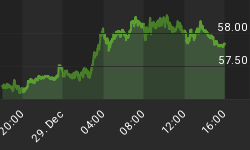Trends Improve After Recent Stumble
For most of us that work on Wall Street, it is fair to say the financial markets are more dependent on low rates and central banks than at any time in our careers. If that were not the case and things were "normal", ask yourself why central bankers are talking about keeping interest rates at near-zero levels for as far as the eye can see. Healthy economies do not need interest rates to be kept near zero.
Fed, ECB on Deck - Reaction Is Big
The Federal Reserve releases a policy statement Wednesday at 2:00 pm EDT. The European Central Bank (ECB) releases a statement less than 24 hours later. Countless factors impact stock prices; one of the most influential is central bank policy. Markets that are overly-dependent on money printing have a higher speculative bent to them, which means they can reverse rather quickly if central bankers disappoint in any way.
Weak Data Puts Pressure On ECB
European economic data has been less-than-stellar in recent weeks. As shown in the chart of the German stock market below, European stocks were flat for 2013 in mid-April and in jeopardy of slipping into the red for the calendar year. Chatter about the ECB riding to the rescue with another interest rate cut helped German stocks find their legs. As shown below, the DAX bounced at a logical support level.

S&P 500 Was On The Ropes
Like stocks across the pond, the S&P 500 was starting to roll over in mid-April. The chart below shows a simple, but very effective, trend-following technique using moving averages. Moving averages help us filter out some day-to-day volatility and focus on the longer-term trend. The most favorable conditions for stocks occur when the following are in place: (a) price (black line) is above both moving averages (blue and red), (b) the faster moving average is above the slower moving average (blue above red), and (c) the slopes of the moving averages are positive. A "bearish look" from a trend perspective is described via the red text in the chart below. The S&P 500's bullish trend was in doubt on April 18 (see upper right).

Expectations For ECB Cut Help Right The Ship
A major factor in the S&P 500's recent reversal was the increasing expectations for another interest rate cut in Europe. From a trend-following perspective, the chart below is much improved as of Monday's close.

Rally Participation Increasing Again
Market breadth speaks to the of percentage of stocks participating in a rally. Healthy markets have broad participation. The Summation Index, shown below, is an intermediate-term measure of market breadth. All things being equal, bulls would prefer to see the line rise on the chart below. The Summation Index recently initiated an attempt at a reversal as ECB rate cut chatter increased.

Post-Central Bank Reaction Will Set Tone
While there is no question the charts above have improved, nothing says they cannot weaken again if the markets do not like what the Fed and ECB have to say this week. Central bank policy is the most important driver of asset prices. The longer you work on Wall Street, the more you understand there is nothing else that even comes close.
Quiet, But Working Behind The Scenes
Due to some time-consuming market model tweaks, we have been posting less frequently on Short Takes, Twitter, and YouTube. Once this important project is complete, we will return to a more normal posting schedule. We have added some new rules relative to how we allocate between aggressive and defensive assets. Our models have been working fine; the tweaks are related to how and when we react to the models.
The S&P 500's advance since late January has been somewhat of an outlier event. Outliers can be accounted for by adding some rules and looking at correlations and weights within our models. The objective is to handle a similar outlier in the future in the best manner possible. The hours of research, backtesting, and code writing will pay dividends for many years to come.
















